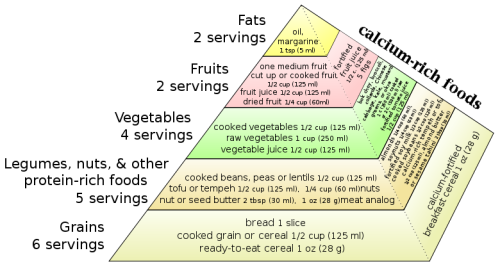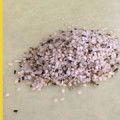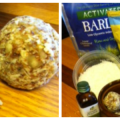
Have you noticed a new gluten-free section at your local grocery store pop up in the last year or so? For those people suffering from Celiac disease this is a welcoming new trend but those people are only about 1% of the US population, so why do they get a special section when we have by far more people dealing with other diet related issues, like peanut and tree nut allergies (affecting 3.3 million Americans)? It’s because there’s a new diagnosis called gluten-sensitivity or gluten-intolerance as well as a few books lately that have gained a lot of popularity on the subject. According to the market research firm Mintel, Americans will spend an estimated $7 billion this year on foods labeled gluten-free but the best estimates are that more than half the consumers buying these products don’t have any clear-cut reaction to gluten. So why are they buying it? Perhaps they think it will help them lose weight, make them feel better or because they mistakenly think they are sensitive to gluten.
What Is Gluten and Where Is It Found in Food Sources?
Gluten is a protein composite that appears in foods processed from wheat and related species including barley, rye and tritcale(a cross between wheat and rye). Depending on how much it’s developed (or worked/kneaded by the baker) this is what gives bread, pizza dough, bagels, etc. an elastic quality that also helps it rise and keep its shape as well as a chewy texture.
Besides being found naturally in the above mentioned grains, gluten is also an additive in many processed foods either because they lack sufficient protein, the food in question needs a stabilizing agent or a longer shelf life is desired. The FDA is close to finalizing a standard defining which foods are gluten-free and how they will be labeled but in the meantime, it’s up to the consumer to become an expert label reader but even this is pretty easy to decipher these days. The Food Allergen Labeling and Consumer Protection Act (FALCPA) mandates that if an ingredient contains protein from wheat then the word “wheat” must be included on the food label and applies to all foods regulated by the FDA.

What is the difference between Celiac Disease and Gluten-Sensitivity?
Celiac disease is a (potentially fatal) autoimmune disorder triggered by eating gluten which causes an immune reaction and damage to the small intestine. This oftentimes leads to abdominal pain, bloating and intermittent diarrhea but in all there have been over 200 different symptoms reported, many of which are not related to the classic form of celiac. Those with the ailment don’t absorb nutrients well and can suffer weight loss, extreme fatique, anemia, osteoporosis, infertility, skin rashes and joint pain. Undiagnosed and untreated, celiac disease quadruples the risk of death and yet at the same time the treatment regimen is much simpler than most diseases in that it is primarily managed through avoiding anything with gluten. There are two main tests utilized to diagnose celiac disease; a blood test to detect anti-gluten antibodies and a biopsy of the small intestine to look for lining erosion. However, if there is a lack of gluten in your system, few antibodies are released and the tests come back negative. The same goes for the biopsy; if you refrain from eating gluten for a few weeks the damage heals relatively quickly and may not be detected.
Diagnosing gluten-sensitivity is by far more difficult to diagnose since there is yet to be a test to screen for it. A sensitivity to gluten brings about an inflammatory response to ingesting foods containing gluten. Sufferers can have a wide variety of symptoms which include difficulty walking, slurred speech, depression, anxiety, anger control issues, chronic fatique, ADD/ADHD, migraines, seizures, autism, neuropathy, memory and concentration problems, pain and mobility issues(similar to multiple sclerosis), exhaustion, infertility, repeated miscarriages or even classic symptoms of celiac. Obviously you can see the problem here. Any of these symptoms could lead a health practitioner to hundreds of different diagnoses and treatment plans. For this reason, gluten sensitivity or intolerance is usually diagnosed by chance. This usually occurs when the person who feels that he may be having a bad reaction to gluten, despite a negative test result, decides to go on a gluten-free diet. But it also relatively common for people to self-diagnose and begin the diet restriction regimen with no professional support. In some cases, the diet will produce life-changing improvement in a matter of weeks or even days. It is estimated that 16-18 million people are considered gluten-sensitive(or 6% of the U.S. population).
Truly on the Rise of Just a Fad?
Twenty years ago celiac disease was considered rare in the U.S. until a few scientists began exploring why it was less common here compared to Europe and other countries but much to their surprise they found that it wasn’t less common; it was just underdiagnosed. Then a few months ago a research team led by the Mayo Clinic’s Dr. Joseph Murray published a study in the American Journal of Gastroenterology. They looked at blood samples taken from Americans in the 1950’s and compared them with samples taken from people today, and determined it wasn’t just better diagnosing driving up the numbers. Today the estimated number of celiac disease sufferers is roughly 1%(or 2 million), making it four times more common than it was 50 years ago.
Dr. Murray suggests that there may be more celiac and other gluten-related health issues today because we’re simply eating more processed wheat products than in past decades. Not only is it in our breads but we also end up ingesting it from a lot of hidden sources such as bottled dressings and sauces, even if frozen foods. Dr. Allesio Fasano, pediatric gastroenterologist commented recently that today’s genetically engineered wheat contains much more gluten than it did 50 years ago. In that time, the amount of gluten in wheat has climbed from 4 to 14%.
But nonetheless, there is still a fad-like quality to this notion of Gluten-free being the most recent savior to all our health problems, like weight loss, feeling horrible in general, etc. and there are plenty of people out there that are gravitating towards the gluten-free section of the store because they somehow think it is the healthier choice over other products. I recently attended a baseball game where one of the food kiosks was proudly claiming to be 100% gluten-free. But they were serving gluten-free pizza, hot dogs with gluten-free buns, soda, cotton candy and Lemonheads! Is it a big deal though? Maybe so because eating strictly gluten-free also means that you’re missing out on a lot of key nutrients such as iron, calcium, fiber, thiamin, riboflavin, niacin and folate due to the fact that many grain products are enriched with these nutrients or have them naturally.
What Does a Vegan Need To Know About Going Gluten-free?
 The challenge for a vegan is that your choices are even more restrictive than your carnivore counterparts.
The challenge for a vegan is that your choices are even more restrictive than your carnivore counterparts.
Gluten-containing No-No’s for vegans (unless specifically labeled Gluten-free):
Bulgur
Farina
Semolina
Spelt
Durum Flour
Graham Flour
Kamut
Imitation meat or seafood
Soy Sauce
Seasoned rice mixes
Seasoned snack foods
Salad dressings and Sauces
Matzo
French Fries
Soups or soup bases
Oats(unless specifically labeled because grain is oftentimes contaminated with wheat during the growing and processing stages of production)
Medication and Vitamins that use gluten as a binding agent
Food additives, such as malt flavoring, modified food starch and others
Safe Gluten-free Vegan Foods
Amaranth
Arrowroot
Buckwheat
Corn and cornmeal
Flax
Rice, soy, corn, potato and bean flours
Hominy
Millet
Quinoa
Rice
Sorghum
Soy
Tapioca
Teff
Celiac disease is a terrible condition with far-reaching ill-health consequences so personally I’m glad to see that even a food choice that has some fad-like qualities can actually benefit people who before would have to spend a lot more time worrying about hidden gluten and cross-contamination. But they’re not the only ones who benefit; just ask the mother of a child with ADD/ADHD whose medication is causing its own set of problems and then tried eliminating gluten and finally started seeing positive changes or the woman who finally achieved a healthy pregnancy because of making some dietary changes.
If you suspect you might be gluten-sensitive then as painful as it may be, don’t start eliminating gluten until you can be tested properly by a reputable health practitioner. This will increase your chances of getting the right diagnoses.
But even if you don’t have a clear case of gluten sensitivity/intolerance, there might be some truth to the idea that there’s an imbalance in how much gluten we’re consuming and perhaps even more so for Vegans who look to whole grains in place of protein that would otherwise come from animals.
Resources
- Mendes, Dr. Dena, Why Be Gluten-Free? August 12, 2011. www.healyourlife.com
- Pomerance, Rachel Making Sense of the Gluten-Free Food Frenzy. June 1, 2012. www.health.usnews.com
- Stores, Carina Will a gluten-free diet improve you health? April 12, 2011. www.cnn.com
- Fox News Latino Are Gluten-free foods just a passing food trend? July 31, 2012. www.latino.foxnews.com
- A glimpse of gluten free food labeling. U.S. Food and Drug Administration. Sept. 20, 2011. www.fda.gov/ForConsumers/ConsumerUpdates/ucm265212.htm
- Have food allergies? Read the label. U.S. Food and Drug Administration. Sept. 2011. www.fda.gov/ForConsumers/ConsumerUpdates/ucm254504.htm.
Photos credit: Madprime and Tomcarrolls respectively.
by Melissa Sanborn of Nutritional Brands, PureVegan






3 Comments
Chia (324 comments)
August 30, 2012 at 4:23 pmThanks Melissa, for sharing. While I am not personally diagnosed with gluten intolerance, it’s good to know about this diet. The safe gluten free foods are foods my family enjoys anyway.
Chia (324 comments)
August 30, 2012 at 4:24 pmI have enjoy many gluten-free baked goods as well (made with non-wheat flour like brown rice flour).
vegetariangirl (1 comments)
August 30, 2012 at 11:15 pmA great vegan recipe blogger who has tons of gf stuff http://ohsheglows.com/